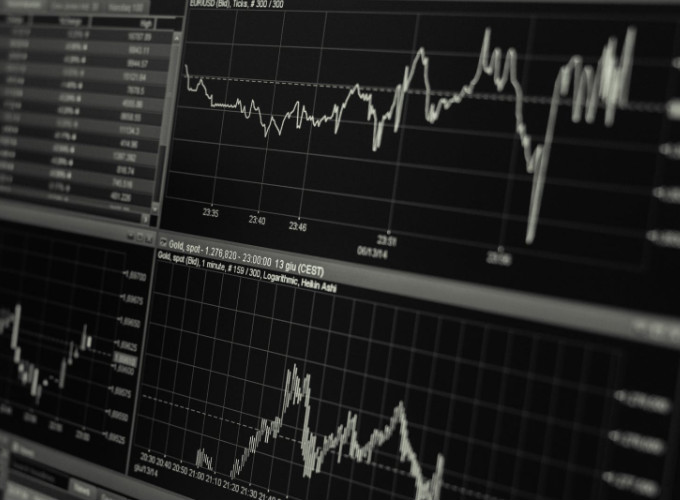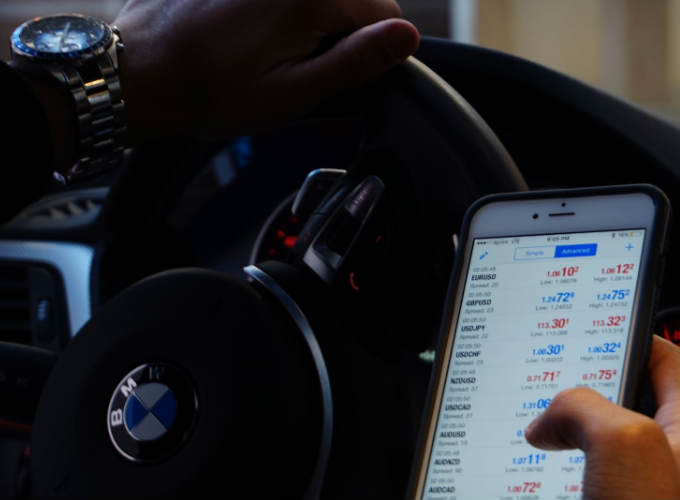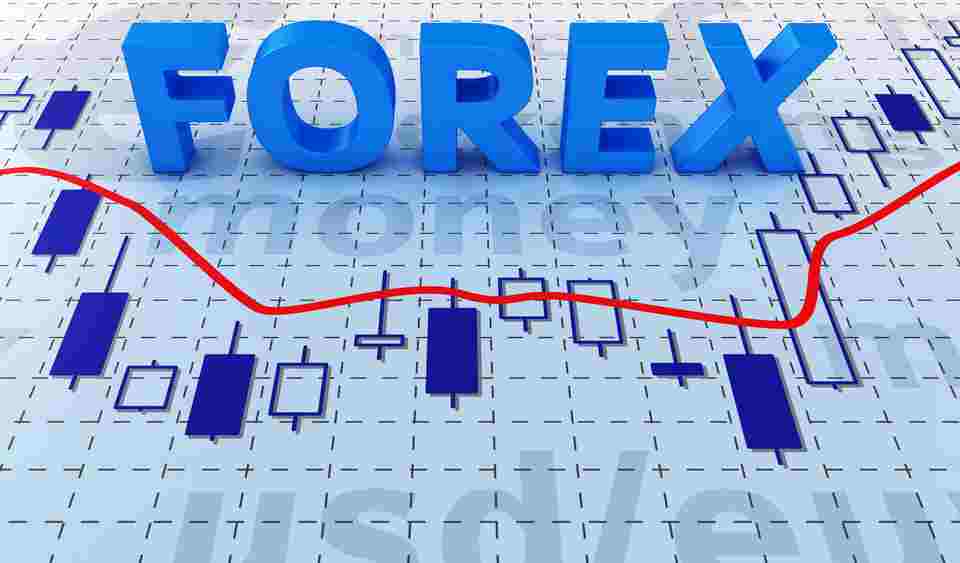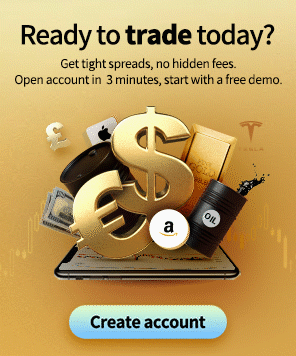Learn Forex & Currency Trading In Australia: 10 Important Things You Must Know
So You want to learn to trade forex in Australia? Currency or forex trading is one of the most exciting, accessible, and promising online careers in the world today.
Sadly, despite these positive offers, the majority of all the traders that try their hand out at it always end up quitting or losing all their funds. The main problem, as any experienced trader would say, is that traders want to use shortcuts to make money in the largest financial market on the globe.
You see, trading successfully is difficult and needs time, experience, dedication, and a persevering mind.
Start forex trading! Click to view mitrade ➜
In this section, we will reveal the 10 Most Important Things You Must know before starting forex investment.
The 10 Important Things To Learn In Forex Trading

1. Choose The Proper Broker
Your first steps in trading are very important, such as choosing a broker.
A broker is like the choice of car you use in a race. If you choose one that breaks down easily, then you will lose. If it consumes too much gas, then you will spend a lot on it. If it is too slow, then you will always lose.
Similarly, if your broker is untrustworthy, slow to give you market feed, denies you opportunities, and is not working towards your success, then you will never make it in trading.
One of the most important aspects that you need to check about the broker is whether they are scammers. Scam brokers are very quick to accept deposits but when you try to withdraw your earnings, they make it impossible.
2. Leverage is the biggest killer of forex traders
Believe it or not, over fifty percent of traders cannot explain leverage yet they trade every day! They simply go to their broker platforms and choose their leverage randomly. This is dangerous because they have no idea what increasing or reducing it means for their account.
Before adjusting yours, make sure you have the proper understanding of what leverage means and how it works.
Leverage is the biggest killer of forex traders. Although many platforms provide up to 500: 1 leverage, this way is easy to cause huge losses. Maybe you made money at first, but your greed will make you lose more next time, and eventually, you get nothing.
Many successful traders prefer low leverage because the risks involved are greatly reduced.
Low leverage and proper capital allow you to bear very small losses but still have the opportunity to earn money, which not only makes you fall asleep at night but also allows you to continue trading on another day.
Practice your trading skills with a demo account!
3. Understand High Spread & Low Spread
On your journey into forex trading, you will find the use of the word,“spread” a lot of times. A spread is a very important aspect in the markets because it is the cost of each transaction executed by the trader in the market.
Now, if your broker charges very high spreads, then you might be working so hard only for them to benefit.
As such, you must understand what a spread means, how to calculate it, methods of avoiding high spreads and some strategies for spread trading.
A high spread means that there is a big difference between the purchase price and the asking price. Compared with major currency pairs, spreads in emerging market currency pairs are usually higher. Low spreads usually indicate low volatility and high liquidity.
Traders should pay close attention to the news or economic calendar because the spread will be affected by many factors such as volatility or liquidity.
If you frequently trade on the forex market, you should choose the broker that charges the lowest spread. For long-term traders (volatility) that generate a certain fee for each transaction, the spread is irrelevant because it has little effect on the transaction results.
4. Find Best Trading Hours
As a forex trader, you need to understand the best hours for your trading.
Did you know that you can trade 24 hours a day every weekday, but not all the hours are good for trading? Well, you better understand it now.
Peak trading hours mean there are more traders in the market. Having a lot of players in the market means there will be lots of price movement, and this is what a real trader wants.
At the same time, you should understand the opening hours of the exchanges in your city. Trading local currencies when the local market is closed may expose traders to unknown market factors, which may affect valuation when the local exchange is opened again.
If you focus on trading in a single currency, please consider setting the trading time to match the opening hours of the local exchange.
By reading this article, you will understand when you should be in the markets and when you should avoid trading.
5. Never Ignore a Stop Loss
When you will be in a real trading scenario, you need something to help reduce your losses even when your strategy leads to a loss.
Remember that losses will always be part of your trading. There is no single strategy that wins all the time.
That said; each time you are about to place a trade, make sure you have the stop loss in mind. This is what will save you from painful losses that might wipe out your account.
Unfortunately, many traders just place their stops randomly without any factual basis. This leads to premature trade exits, poor money management, excessive losses, and other account-denting outcomes.
6. Always trade with an edge
“Trading with an edge” simply means that you should have a promising reason for taking that trade.
For example, before I take a trade, I ensure that it is either on strong support or strong resistance zones. As such, if you ask me why I opened a “buy” trade, I will say it is because the price rested on a support zone.
In the same way, make sure you have a valid reason for opening a trade. That “reason” is your edge and it helps in eliminating careless and unnecessary trades that expose you to losses.
7. Understand The Types of Brokers
Have you ever noticed that some brokers have acronyms such as ECN, STP, and NDD in their names? Do you understand what the terms mean?
Now, in case you had no idea what these acronyms mean, then you might be in for a rude shock because those simple names mean a lot to your career.
These acronyms define the type of broker that you are dealing with. Each of them has different qualities that make each broker unique.
8. Understand your Analysis
At times, when I’m not trading, I visit forex trading blogs in Australia and see technical traders arguing with fundamental traders.
These two groups have always been at war; with each believing that it is superior to the other. Well, whether you like it or not, you will also join this debate.
As such, you need to figure out which one between technical and fundamental analysis is best for you.
In the end, you will find that while you might take up one of the sides, you must also use a little of the other side to support and sharpen your analysis.
9. Build a Strategy
A strategy, or your trading plan, is the “map” that determines when you sell or buy, when you close trades, when you accept losses, and so on.
You can use powerful, already-tested strategies or do some digging around and create your own. You can use price action, indicators, fundamental knowledge or just anything that makes sense.
Here is a perfect guide to help you in creating your trading strategy.
10. Risk to Reward Ratio
The final bit that you need to grasp as a trader is how to maximize your profits while decreasing your risks.
In light of this, we bring you one of the most successful trading approaches that can do exactly that for you: Risk to Reward Ratio.
It might sound complicated but this is only because you might not have come across the concept.
Once you read the interesting post, you will see how simple it is. In addition, it makes trading more enjoyable and almost risk-free because each trade you make covers multiple future losses.
Apply this concept in your trading and you will see a spontaneous improvement in your forex trading gains.
Common Problems In Currency Trading
I am not making progress despite making many profitable trades. Why?
Many reasons might slow or stop account growth such as making more losses than trades. I remember getting excited when my trades went into profit and I would close them. However, when I was in the losses, I would hold the trades and they ate so much of my account until I lost all my profits. Is this the case with you?
Relax because I have a solution for you are known as the Risk to Reward Ratio (RRR).
This is a trading approach that will work wonders for you if you understand it well. It ensures that you make more profits than losses, therefore ending up on the winning side.
How do I know when there will be good volatility to trade with?
We all have memories of times when we got into a trade then it was very slow in moving. At times, we got into trades then they went in the opposite direction very fast.
In both cases, the problem can be attributed to being on the wrong side of the trend.
If you get into an uptrend too late, it might move very slowly since the volatility is running out. Similarly, if you buy at a resistance zone, you might encounter serious losses if the trend reverses to a downtrend.
The trick, therefore, is to make sure that you always flow with the main trend. At Mitrade, we have prepared a very special article for you so that you can become an expert at identifying the trend and enjoy the highest volatility for easier, profitable trading.
Practice your trading skills with a demo account!
Is there a perfect time for trading for the best profits?
The forex market is open twenty-four hours a day through the trading week (Monday to Friday).
However, you cannot trade throughout, especially if you are a day trader or scalper. This is because there are times when the markets are dormant and others when they are active.
So, depending on where you live or when you prefer trading, you must understand the Forex sessions and market hours.
For instance, since I do my trading in Australia, I trade only between 8 am and 5 pm local time (GMT +10). This is the time when the markets are open and everyone is trading. During this time, there is high volume and so volatility is high.
Are there any constant risks in forex trading?
Just like in all other businesses, the Forex market has its own. The major risks that you should always evaluate include:
Interest rate risk
Counterparty risk
Country risk
Leverage risk
Liquidity risk
Political risk, and
Transaction risk
There are more risks that traders face in their every take such as:
● Volatility: Sudden volatility can be risky especially if it opposes a trade. The price can move far from the entry point, leading to stop losses being hit.
● High Leverage: Leverage trading allows a trader to risk more than they have in their account. If they make wrong predictions while using high leverage, they risk losing all their money.
● Overtrading: Trading can be addictive. You might find yourself trading tens of setups at a go, and this can confuse you or expose you to high-risk trades. Overtrading is very common with beginner traders.
● Scams: Multiple scams might affect traders such as fraudulent brokers, lying indicator and robot sellers, or fake courses, to mention but a few.
How much should I have as my capital?
In case you did not know, the amount in your account determines your growth and performance.
I learned this from experience. When starting, I had a small amount to trade with. This forced me to risk a lot by using high leverage and lot size because I wanted to make some good money using a small account. Many times, I ended up blowing the accounts due to excess risk.
The point here is that if you have more capital, then you can make more comfortably without risking a lot.
For instance, if you have a $10,000 account and you target 10% per week, then you end up with $1,000. If you have a $1,000 account and target the same percentage, then you will end up with only $100.
In this case, the person with a $10,000 account can live more comfortably without risking too much.
How do I know that a broker is legit?
In the olden days when some of us were coming into forex, we were exposed to scam brokers who stole our funds or manipulated the markets. The problem is that we had no one to report to; so we endured the pain and went searching for new ones.
Luckily for us, today, there are bodies known as regulators. They license and supervise the behavior of brokers. So, if you believe a broker has manipulated the charts, taken your money or done something you find unfair, you report to the regulator.
In short, to know if a broker is legit, you must check if they are regulated by a serious body. For instance, traders in Australia are protected by the Australian Securities and Investment Commission (ASIC).
3 Ways to Trade In the Forex Market
You can trade Forex in three main ways. Let’s look at each of them in detail:
⭐ Physically
If you have some AUD that you want to change into USD, then you can take them to a bank or forex bureau. This mostly happens when you are traveling abroad.
When doing this, the bank acts as your broker. The difference is that this time, you do not pay the spread. Rather, the bank or bureau offers you either a fixed or negotiable rate.
⭐ CFD Brokers
The second most popular way of trading forex is through a Contract-For-Difference (CFD) broker.
This time, rather than owning the AUD, USD, or any currency, you only need to predict the direction of the prices. You might say the AUDUSD pair will rise or fall. If you are right, then you make profits.
⭐ Derivatives
Derivatives are forms of future contracts where an investor commits to purchase something in time to come at a current rate. It is mostly used in preventing losses or protecting investments.
For instance, you might buy gold at $1500 per ounce and, due to your predictions; you think the price will fall in the future. So, to be safe, you find a buyer who agrees to pay you the same amount in five months whether the price will have risen or fallen.
Conclusion
This post reveals the most important things in forex & currency trading in Australia. You might have come across negative info that discourages you from taking up this interesting career. Maybe you had tried it before and lost, then felt like giving up.
If any of the above cases affected you, then this post was dedicated to you. Follow the right procedure in your learning, practicing, and actual trading.
I hope you enjoyed the read and learned something new.
Get FREE Access to our strategies using the Mitrade Demo Account.
* The content presented above, whether from a third party or not, is considered as general advice only. This article should not be construed as containing investment advice, investment recommendations, an offer of or solicitation for any transactions in financial instruments.
- Original
- Trading Analysis

Risk Warning: Trading may result in the loss of your entire capital. Trading OTC derivatives may not be suitable for everyone. Please consider our legal disclosure documents before using our services and ensure that you understand the risks involved. You do not own or have any interest in the underlying assets.








